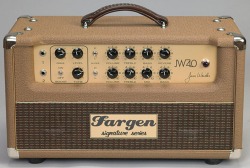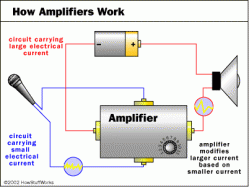Science of Rock Concerts
~Intoduction to Amplifiers~
An audio amplifier is an electronic amplifier that amplifies low-power audio signals (tones in the human range of hearing), into tones that are loud enough for speakers on stage. Although, amplifiers aren't just used for musical equipment. You can find them in You'll find them in televisions, computers, CD players, and many other devices that use speakers to make sound. The job of an amplifier is to increase the audio signal so it has a larger current. It basically produces a more powerful version of an audio signal by making the speaker cone produce sound waves.
~History~
The audio amplifier was invented in 1906 by Lee De Forest when he invented the first electronic signal amplifier called the triode vacuum tube. The triode was a three terminal device with a control grid that could control the flow of electrons. The triode vacuum amplifier was used to make the first AM radio.
~The Inside Mechanics~
The amplification of sound can be explained by looking at two circuits within the amplifier. The first is the output circuit that is made by the amplifier's power supply. It draws energy from battery power or an outlet. If the amplifier is powered by household current, where the flow of charge changes directions, the power will change into direct current, where the current always flows in the same direction. The power supply also smoothes out the current to make an even and uninterrupted signal. The output circuit's job is moving the speaker cone. The second circuit is the input circuit. The input circuit is the electrical audio signal running in from a microphone. Its job is to modify the output circuit. It applies a resistance to the output circuit to re-create the voltage of the original audio signal.
~A Good Amplifier~
The goal of a good amplifier is to cause as little distortion as possible. The final signal driving the speakers should be as close to the original input as possible, even though it has been increased several times. Also, a generally good way of knowing you have a quality amplifier of build and power output, is the size and the weight of the amplifier itself. Better quality amplifiers will usually have a heavier and larger heatsink.


